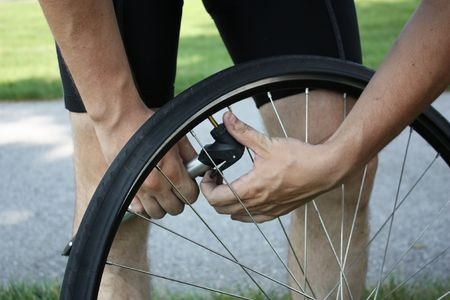5 Things Every Cyclist Needs for a Safe Ride
Posted by Kitty on Jul 18th 2014
 Any cyclist knows that riding is one of the best ways to unwind, have fun and take in the scenery and it doesn't take long for any rider to recognize that there are inherent hazards whether you're in the countryside, in town, or even in your own neighborhood. Of course, regular maintenance and repair is necessary to keep a bicycle in top condition. To make sure you don't get caught off guard on your next ride, there are tools every cyclist needs to have. These gadgets make it easier to perform the occasional roadside or trail-side repair. Safety equipment lessens or prevents injuries such as head trauma and broken bones. To have a safer ride, there are 5 Things Every Cyclist Needs for a Safe Ride.
Any cyclist knows that riding is one of the best ways to unwind, have fun and take in the scenery and it doesn't take long for any rider to recognize that there are inherent hazards whether you're in the countryside, in town, or even in your own neighborhood. Of course, regular maintenance and repair is necessary to keep a bicycle in top condition. To make sure you don't get caught off guard on your next ride, there are tools every cyclist needs to have. These gadgets make it easier to perform the occasional roadside or trail-side repair. Safety equipment lessens or prevents injuries such as head trauma and broken bones. To have a safer ride, there are 5 Things Every Cyclist Needs for a Safe Ride.
A helmet is one of the pieces of safety equipment you need on the road to increase your chances of safely navigating road surfaces. This protective gear comes in a variety of shapes and sizes. It's prudent to wear a helmet that snugly, but not tightly, conforms to the contours of your head. There should not be more than a 1 inch space when a helmet moves in any direction. It should fit level touching all parts of your head. Any helmet you purchase should have coolness, ventilation, and fit control for your comfort needs. For helmets being used in the United States, choose one that has a US Consumer Product Safety Commission standard sticker to conform to federal regulations. Inspect the helmet to ensure it's made of EPS foam. Finally, the strap adjustment should be secure to hold the helmet in place.
A first aid kit is an essential part of every cyclist's possessions. These kits come in a variety of shapes and sizes. You can buy a pre-packaged unit or make your own kit. This equipment should consists of needed supplies to help you with handle basic road crashes until you can get medical attention. Gauze, adhesive bandages, non-adhesive bandages, betadine, and butterfly closures are only a few of the supplies you need to carry. You can also store your personal medication, emergency phone numbers, and a small flashlight in this kit. This is one of the best pieces of equipment to carry since it helps sustain an injury until a doctor can be seen. A first aid kit can be attached to a bicycle using velcro or fasteners. Most are waterproof and easy to access.
A detachable bike pump is one of the smart tools of the trade. This tool can be stored in a back-pack or jersey pockets. Flat tires pose a hazard to cyclists. Being stuck on the road or a trail can jeopardize your personal safety. Being able to pump air into a tire until you can have it fixed will enable you to save your tire. When shopping for a bike pump, look for durability, comfort, and ease of use. Check the manufacturer's guide to ensure that you can properly operate the bike pump.
Another important gadget to have is a set of bike lights. Installing this equipment does not require much time but it's pertinent for it to be positioned correctly and fastened securely to the bike. USB rechargeable lights are a smart choice. Riding on the open road can cause a person to lose track of time. Sometimes people get caught in the fog. These lights will help navigate a road safely.
Lastly, A Bicycle multi-tool might just be your best friend. I personally carry a Crank Brothers Multi Tool that covers all the necessary hex tools, screw driver and chain tools. It includes the chain breaker and spoke wrench, both of which I have used many times on my bike and have actually had to lend out to others on a ride.
Cycling on the road can be a fun adventure. Safety precautions and knowing the best equipment to carry on the road will help make these trips better. You can ask a professional at a bike shop if you have any questions regarding equipment safety or equipment use.
